Newsletter - June 2012
Burlington Historian

June 2012

Society Becomes Owner of Rooker Cemetery Through
the Generosity of the Paul L. Kramer Trust
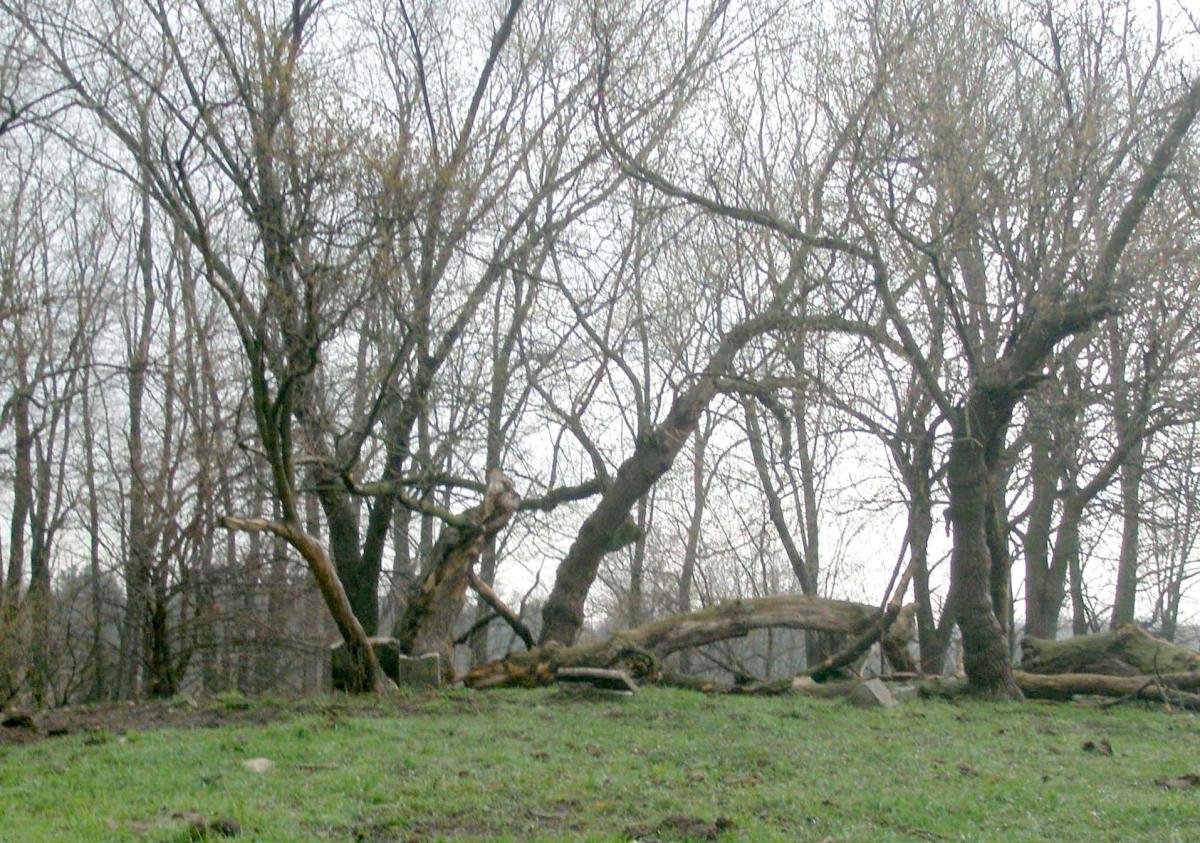
In a transaction completed in April 2012, the trustees of the Paul L. Kramer Trust deeded what is known as Rooker Cemetery – a "one acre burying ground" overlooking Honey Creek near the intersection of Bieneman Road and Spring Prairie Road – to the Burlington Historical Society.
The cemetery, located on land bought by Joseph Rooker in 1840 from the federal government, is the resting place of Joseph and his wife, Sabrina; at least five of their children; and the husband and three children of one of the daughters. Whether others may also be buried there is not known.
The cemetery (shown at the right) has not been maintained over the years and, currently, has only two gravestones containing information that can identify persons buried there. Other pieces of gravestones, without identifying information, are strewn about the area with no certainty that they mark the actual locations of the graves. Even the two gravestones that show some information are broken and may have been moved over the years from their original locations.
The names of the persons buried there were obtained primarily during visits by Society members in 1929 and 1981, when more of the gravestones still existed and could be "read." The first person buried there is thought to be 8-year-old Josephine Lewis, who died in 1847. She was the daughter of Dr. William Lewis and Olive, nee Rooker, Lewis, both of whom are also buried there. Olive is thought to be the last person buried there. She died in 1899.
When the administrators of the Joseph Rooker estate sold the Rooker farm to John and Anthony Dahlman in 1868, the sale excluded "one acre known as the burying ground." However, the location of that acre was not specifically set out in the documents. In two subsequent sales of the former Rooker farm – from the Dahlmans to the William C. Wilson Co. and the Wilson Co. to the Paul L. Kramer Trust, the "one acre burying ground" was not even mentioned.
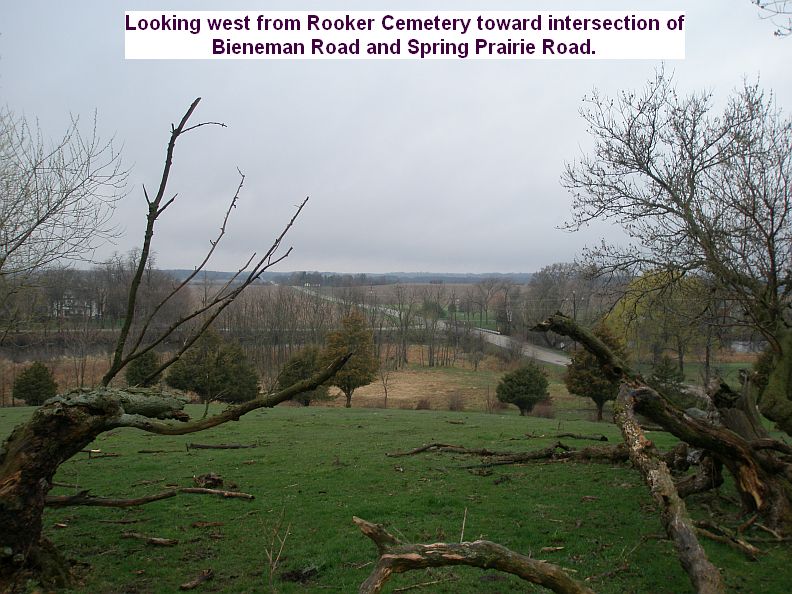
Accordingly, when the Society approached the trustees of the Kramer trust about preserving the cemetery, there was no "chain of title" to separate the one acre from the trust property, or a legal description of exactly where the boundaries of the one acre were. To set out the cemetery boundaries and create a legal description of the parcel, Robert Wetzel, of B.W. Surveying of Burlington, graciously donated his services to the Society.
With the surveying completed and other legal steps taken, the Paul L. Kramer Trust then donated the parcel to the Society.
The Society plans to have the parcel fenced off and, with the help of students from Wisconsin Lutheran College in Milwaukee, cleaned up.
In a visit to the cemetery, Anthropology Professor Ned Farley of Wisconsin Lutheran College indicated that it is possible that the site may also be an Indian mound. Professor Farley intends to research the site and possibly use ground penetrating radar to identify the location of the graves.
President’s Message
By the time you read this, the annual Burlington ChocolateFest will be over. With the Nestle production facility being a major player in the industrial scene of Burlington, we are able to be proud of the innovation and efforts of past industrialists who made Burlington a thriving manufacturing center, a reputation that it still retains although companies have come and gone over the years and given way to new industries and products.
Some of the past companies and products included: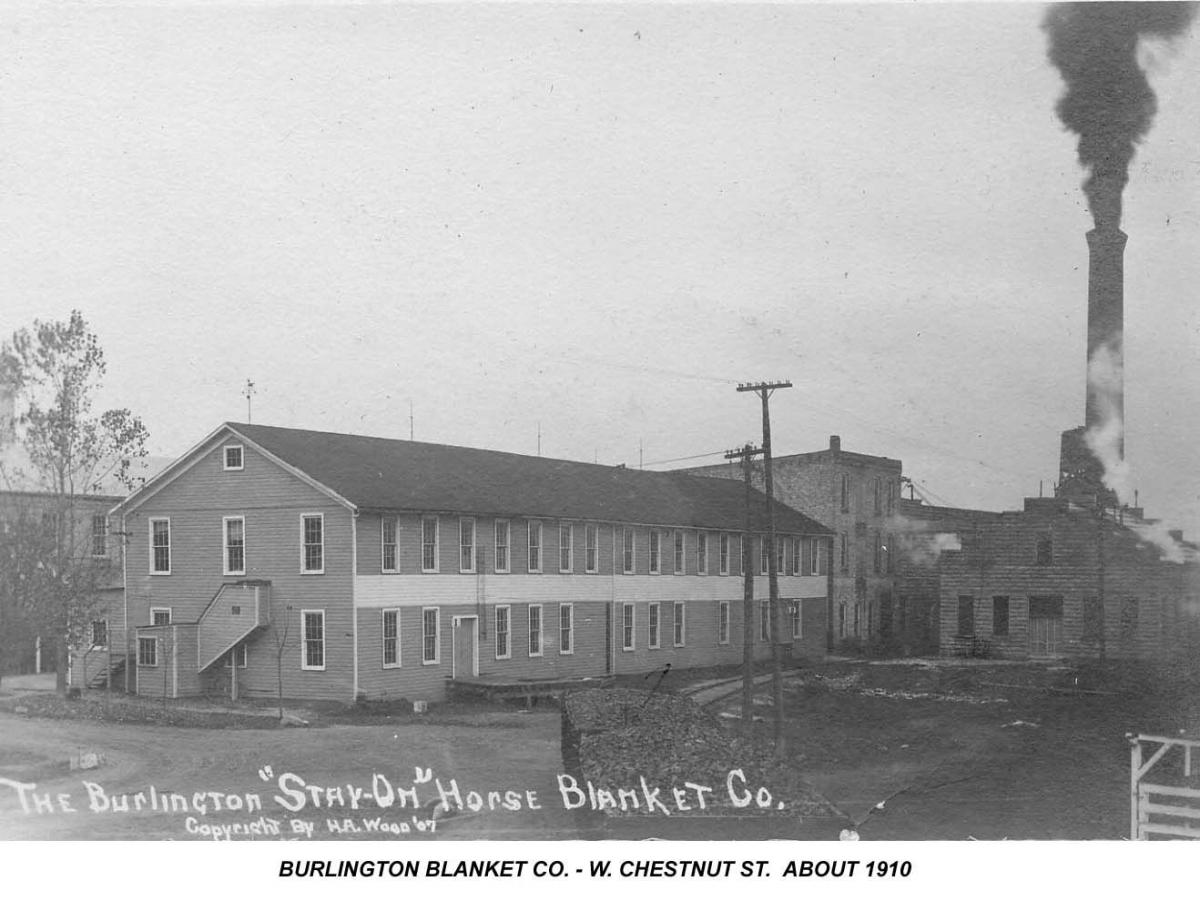
• Badger Basket and Veneer Co.
• Burlington Blanket Co. and its successor, Burlington Mills (horse and other animal blankets with straps, automobile trunk liners, rugs, etc.)
• Wisconsin Condensed Milk Co. (later Nestles Milk Products Co.)
• Burlington Brass Works
• Multiscope and Film Co. (panoramic cameras)
• Murphy Products Co. (animal feed)
• Cooper’s (Jockey and Midway undergarments)
• Security Lightning Rod Co.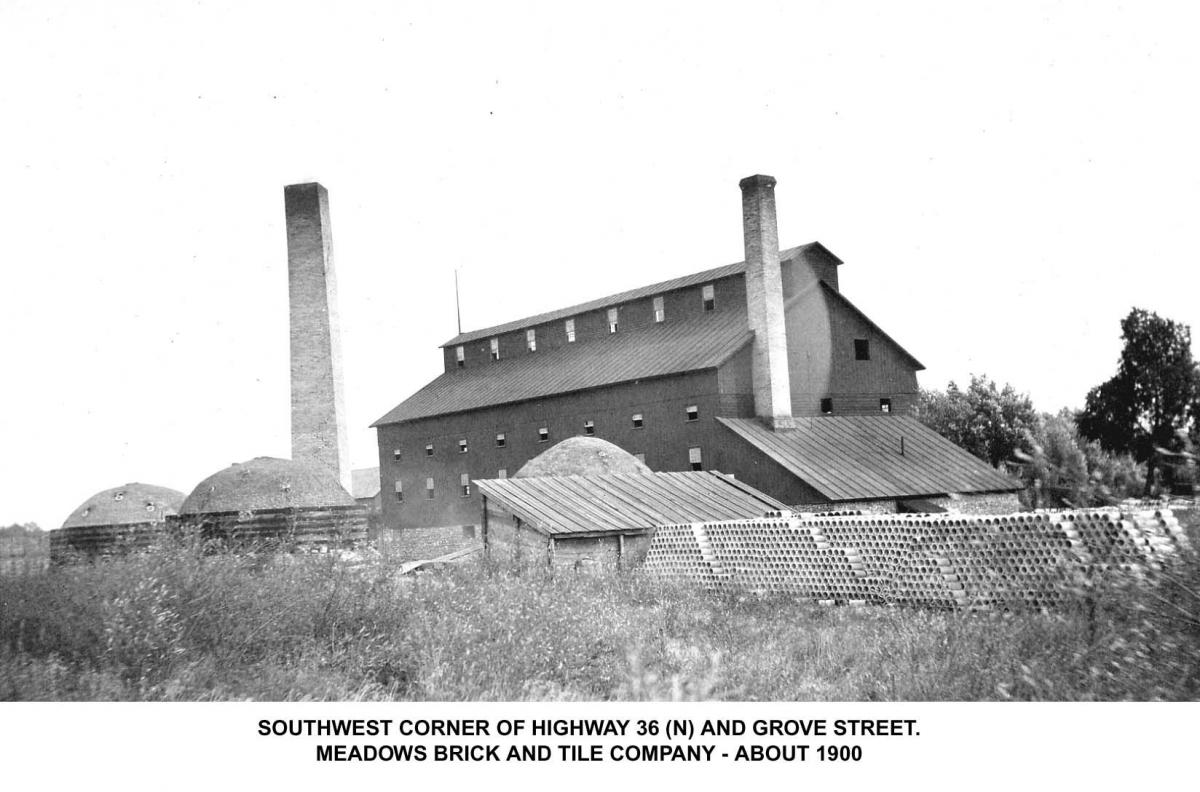
• Burlington Brick & Tile Co.
• Packaging Corporation of America (corrugated cardboard products)
• Circle Inc. (shipping stabilizers)
The foregoing are a sampling of the companies that employed a great number of Burlington area workers over the years.
Some of the current manufacturers, in addition to Nestle Chocolate and Confection, include:
• Lavelle Industries Inc. (rubber products)
• Saint-Gobain Containers (formerly Foster-Forbes glass bottle factory)

• Air Liquide America (oxygen, hydrogen, nitrogen, argon, and other gases)
• Echo Lake Produce (egg processing)
• Tuscarora Inc. (plastics foam products)
With the expansion of the Burlington Industrial Parks over the years, it shows that Burlington is a destination and attracts many fine families, an aggressive workforce, and community involvement.
As this year moves quickly along, enjoy our Burlington assets and take advantage of all the activities that Burlington and other Wisconsin communities have to offer.
- - - - -
The Society would like to thank Kathy Thate, who has agreed to take over coordination of the docents at Pioneer Log Cabin. Thanks, Kathy!
Dennis Tully
100 Years Ago . . .
• In June 1912 the Burlington Automobile Association was organized with Ben Holmes as president. Annual dues were placed at $2 with the money to be used for fixing up bad spots, raking off stones, etc., on the roads leading from Burlington.
• In August 1912 most residents on West Geneva Street (now W. State Street) signed a petition opposing the paving of that street and the Council dropped the matter. Also, Mayor Edward F. Rakow vetoed the paving of Wilmot Avenue (now S. Pine Street).
Former Lyons Firm Had Long Record in Moving Many Burlington Buildings
The moving of buildings in Burlington has a long history. The earliest newspaper record of a building being moved was in October 1860 when the Burlington Gazette reported that John W. Edmonds had moved a wooden building to a lot between Sawyer & Barnes Plow Factory and Weygand’s Paint Shop. Edmonds intended to use the building as a carriage factory. The following is adapted from the November 12, 1948, Standard Democrat.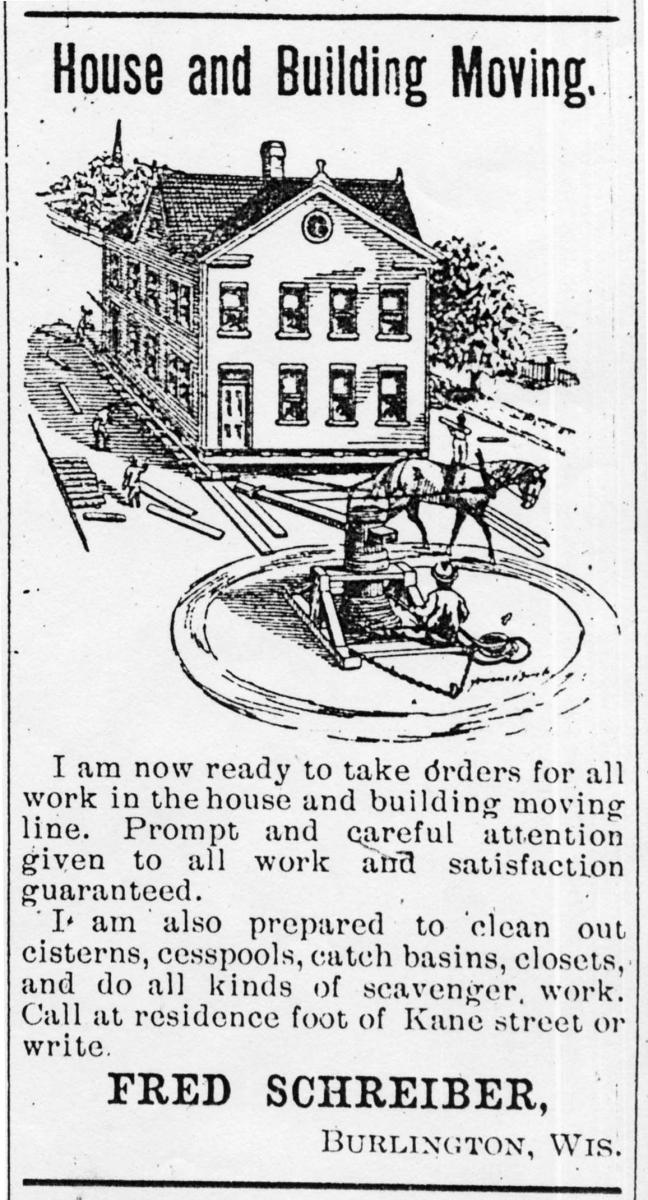
The 1948 moving of the Murphy stables and the Goldbeck home located at Bohner’s lake marked two more visits to Burlington by a Lyons and Elkhorn firm that has been moving things in this area for the past forty-nine years – the E. C. Robers Contracting Company, also known as Robers Movers.
Albert and Elmer Robers, uncle and nephew, are co-owners of the business, and they say, "with the right equipment we can move anything." And they have consistently proved their statement in Burlington. Other recent local jobs were the moving of the old Leber house from Chestnut Street to Wilmot Avenue (now S. Pine Street) and the installation of the Meinhardt Bank’s new vaults.
In the recent past the Robers firm has moved into position two large Wisconsin Southern Gas Co. storage tanks and moved the Jim Wilson home, a three-story house, several blocks from its former location near the filling station on the corner of Pine and Jefferson Streets to the Burlington High School (now Karcher Middle School) vicinity. The Shanahan home on Schemmer Street near the brewery, which they moved to McHenry Street this year, had been moved forty years before by Benjamin Robers, Albert’s father, Elmer’s grandfather, and founder of the firm.
One of the biggest moving jobs done in Burlington was by the Robers firm working with a Racine firm about 40 years ago. (See 1909 photo at left.) This was the moving of the large brick building, used as a machine shop by Nestle’s can factory, to its present site from its former location on the corner where the Bank of Burlington (now May’s Insurance) stands.
Because it was built against another building, the brick structure had only three sides, making it especially hard to move. Since it had to cross the Soo Line tracks, the work had to be done in a few hours between trains.
The firm has not confined its work to the immediate vicinity of Elkhorn. It has had jobs as far west as Footville (20 miles west of Janesville), as far north as Watertown, as far east as Racine, and as far south as Libertyville, Illinois.
The biggest job the Robers firm ever tackled was in May of this year in Janesville. At that time they moved a girls’ seminary, two stories high and 40 by 91 feet, 350 feet and turned it around. The job took six weeks.
Ferd J. Robers, of Burlington, is Albert’s brother and until twenty years ago he was associated with the firm. He went into construction work after leaving the firm and is now doing hydraulic dredging on the Mississippi River.
The firm was formerly located in Lyons and two of the employees, Richard DeGrave and Paul Phillips, are from Lyons. The third man, Jack Heusser, comes from Elkhorn.
The Robers equipment for "moving anything" includes ten sixty-ton hydraulic jacks, four twenty-ton hydraulics, six fifteen-ton lever jacks, four sets of four-wheel steel moving dollies, several large timbers, and three trucks, all equipped with power winches.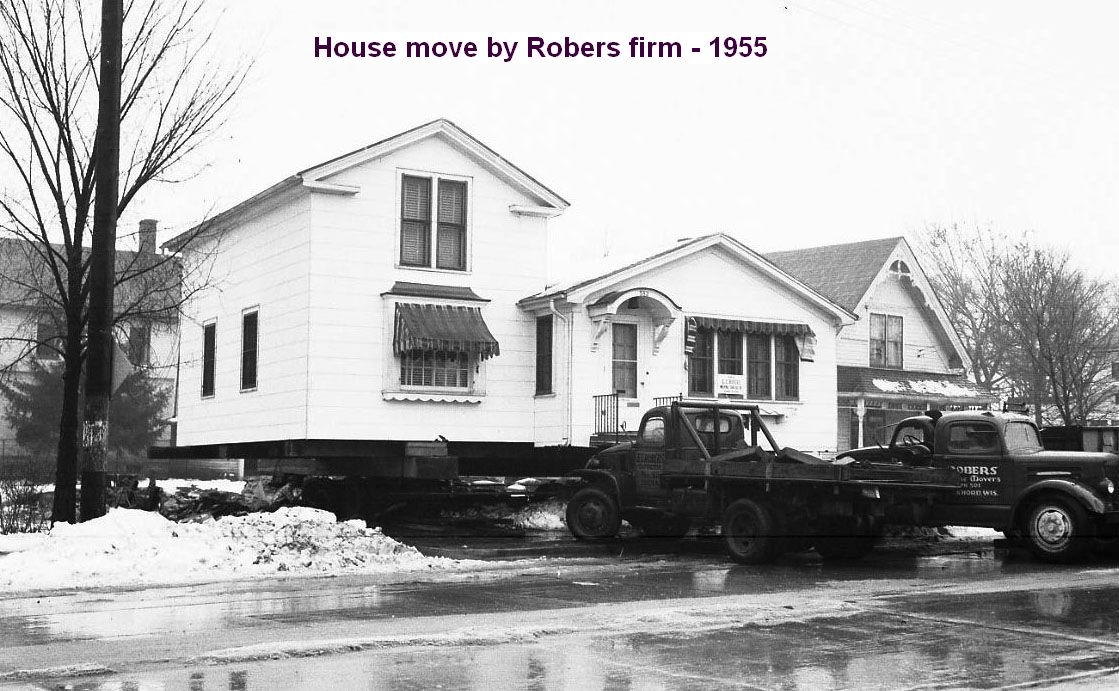
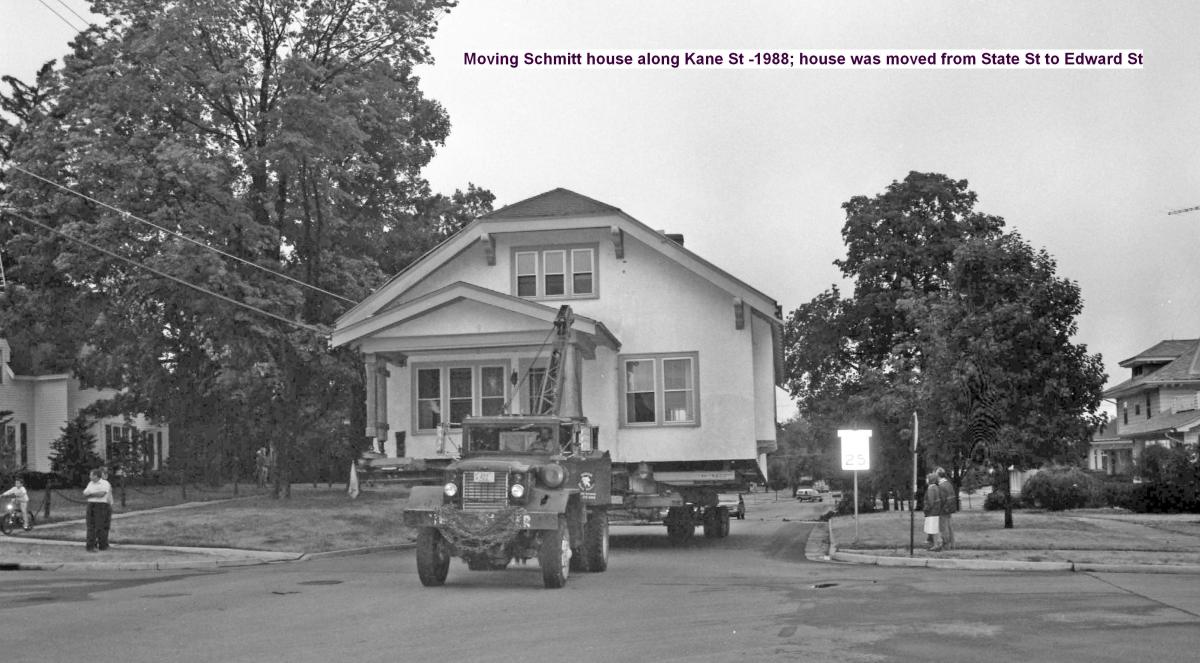
Electioneering in a Small Town
Contributed by Priscilla Crowley
Democrat?? Republican?? Something In Between?? None of the Above!!
Election fever is here once again. The Presidential race is heating up and politics are a major topic of conversation. Nothing gets more heated than a good political conversation with people on opposite sides of an issue who are noisily expressing their opinions. Sadly, some of the glamour has gone out of electioneering. Oh, there are still the political arguments, they still hold the conventions, and they still report the results. But in this technological age the romance and glamour are definitely a thing of the past.
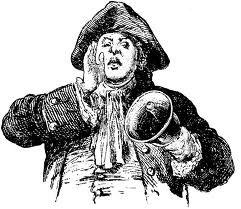 When we lived in Lyons our house was right across the street from the Town Hall – this was a happening place for many different kinds of activities, one of which was any election that was being held. It was a day of fascination for us! It started bright and early in the morning and we would spend a great deal of the day just hanging out in the front yard to watch the fun. From the moment one of the officials opened the big doors and declared in a loud voice, "Hear Ye, Hear Ye, the polls of the Village of Lyons and Lyons Township are now open!" - to the end of the day when the process was repeated for the closing of the polls it was a day of absolutely top-notch entertainment.
When we lived in Lyons our house was right across the street from the Town Hall – this was a happening place for many different kinds of activities, one of which was any election that was being held. It was a day of fascination for us! It started bright and early in the morning and we would spend a great deal of the day just hanging out in the front yard to watch the fun. From the moment one of the officials opened the big doors and declared in a loud voice, "Hear Ye, Hear Ye, the polls of the Village of Lyons and Lyons Township are now open!" - to the end of the day when the process was repeated for the closing of the polls it was a day of absolutely top-notch entertainment.
All day long people were coming and going, it was one of the few times of the year that we 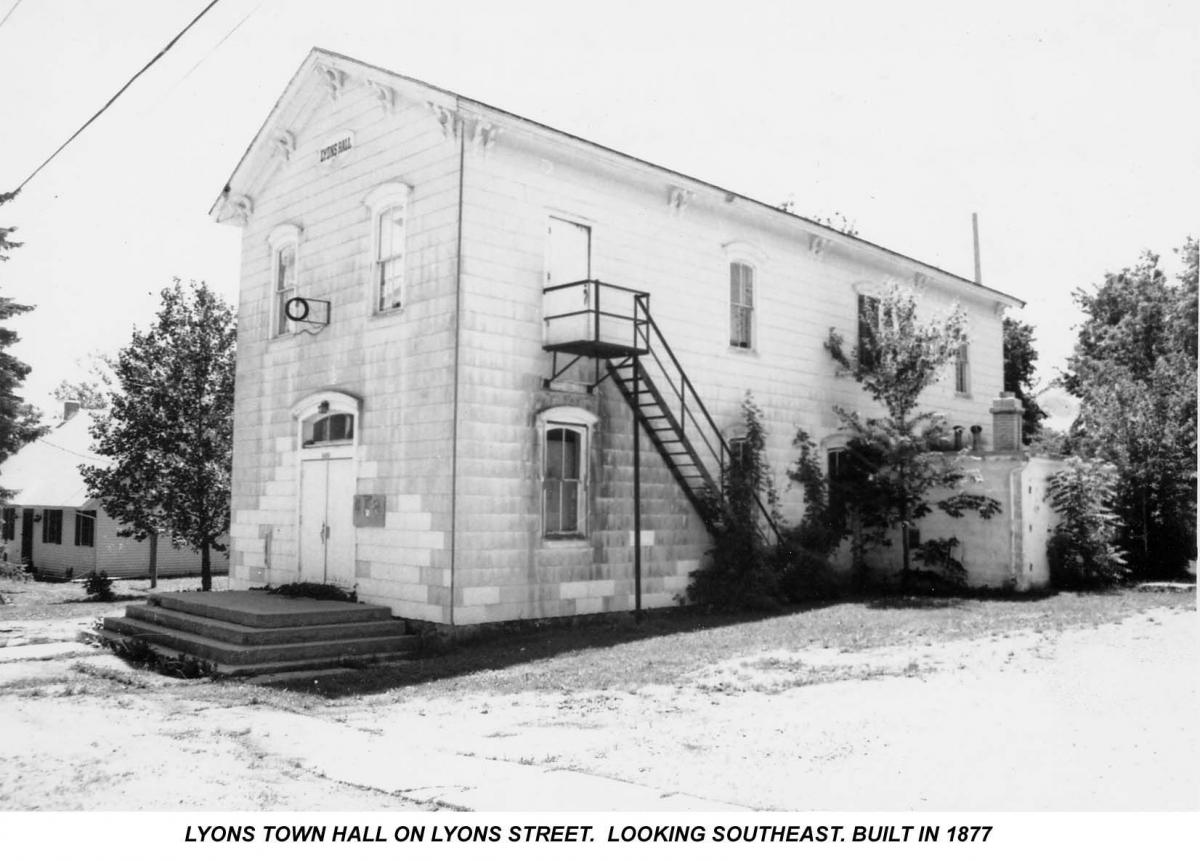 actually had traffic on our street. It was like having a village reunion. People were calling out to each other, catching up on the gossip and exchanging political views on their way in and out of the Town Hall. When you figure that the majority of people in the township were farmers who really didn’t get to town all that often unless it was to pick up feed or fertilizer or a tractor part or two, casting your ballot became one of the social events of the year. No one wanted to miss out on anything, it was a must attend event and ranked right up there with auctions and the Fireman’s Picnic.
actually had traffic on our street. It was like having a village reunion. People were calling out to each other, catching up on the gossip and exchanging political views on their way in and out of the Town Hall. When you figure that the majority of people in the township were farmers who really didn’t get to town all that often unless it was to pick up feed or fertilizer or a tractor part or two, casting your ballot became one of the social events of the year. No one wanted to miss out on anything, it was a must attend event and ranked right up there with auctions and the Fireman’s Picnic.
It was a known fact that many a farmer didn’t quite make it home on time for milking on Election Day. After all exchanging opinions and trying to persuade someone to come around to your point of view can be very hard on a person. It can cause an extremely dry throat, that’s a terrible thing to suffer from! The only cure on a nice spring or fall day is to stop at one of the local watering holes and quench that thirst with something long and cold. You know if the first one goes down good, the 2nd, 3rd and even 4th one goes down even better. Before long milking cows just doesn’t seem like it matters all that much, after all where would the cows go? They’d still be there in an hour or two.
Much village folklore came out of things that happened on election days. Some of the stories became legendary. Most likely none of these stories could be proved as true but they sure made for great conversations. The Presidential Elections were the best ones. Feelings really ran high and people lined up on both sides of the issue. It did and still does sometimes split families down the middle. My mother was a big political junkie. She loved everything about the Presidential Elections. She would stay up late at night and watch the conventions on television. She’d listen to the speeches and she loved it when they did the roll calls for nominations from the various states. On election night she would stay up and watch the results as they rolled in. Back then it wasn’t quite so cut and dried like it is now. You know almost as soon as the polls close who the winner is, back then it took hours and you always had to wait for the polls to close in California. Now you know almost as soon as the last ballot is cast who the winner is going to be. I’m sure Mom would not be happy about this. As I said in the beginning of this story, a lot of the romance is gone from the election process. It’s just another news day, not the long drawn out affair it used to be.
The carnival atmosphere we experienced in Lyons was part of that romance. I’m sure that this type of atmosphere was repeated over and over again in every small town across America. You have to wonder how many husbands and wives had disagreements over who should be the next president. Of course, back then a wife was supposed to listen to her husband and take his advice when it came to political issues, like who would make a suitable president and how they should vote to accomplish what was best for the country. My mother-in-law was one of those women who mostly listened to what her husband said but was still independent enough to have her own private opinions. I can remember her complaining that she didn’t always understand what all the fuss was about, but if Grandpa told her to vote Democratic she generally did because she didn’t know enough about it to do any different. As she got older and her children left home, she was left with a little more time to find out what was what when it came to elections. Even though she began to have her own opinions about who should be elected, she still listened to what Grandpa said until one day we pointed out to her that she could vote any way she wanted, that it was her right to vote for the candidate of her choice and that he couldn’t follow her into the voting booth to watch how she marked her ballot. It goes to show you what the differences were in the generations, she had never thought of voting any other way than what Grandpa said she should, she just did as he said.
The younger generation on the other hand had started to grow away from that blind belief in doing just as they were told. Women’s lib was getting off to a good start and who would have thought that Grandma, in her own way was a part of the movement. This was confirmed the day she confided in me that she hadn’t voted for the candidate Grandpa told her to vote for, she had voted her own way and felt good about it. I can still see her standing there, an amazing woman, with her hair wound up in braids on top of her head, wearing one of her faded and well-worn dresses and her Mother Hubbard apron with her big purse on her arm. As I think back, Grandma was truly one of the most interesting women I have ever met and one of the women I truly admire for her fierce, independent spirit and her hard work ethic. She loved her family fiercely but that never stopped her from letting them know exactly what she thought. She never left you in doubt about what she was thinking, you always knew exactly where you stood.
I know the people of Lyons no longer vote at the old Town Hall. I sometimes wish I could still sit on the front porch and listen to the call, "Hear ye, hear ye, the polls are now open" and listen to the conversations as people mingled before and after entering the polls, talking, laughing, arguing good naturedly, exchanging opinions – all part of the process that makes America the country that it is. Back then I would have fallen asleep to the ringing tones echoing from our black and white television, "The chair recognizes the representative from the great state of Illinois." Then the reply would echo back, "Mr. Chairman, the great state of Illinois would like to cast its votes for the Honorable Adlai Stevenson, the next President of these United States!" Then cheering and hollering and music – and this would go on and on long into the night. I would be lulled to sleep by the sound of these enthusiastic nominations and the faint flickering light that the television would cast on the ceiling. How wonderful to know that we can all be a part of the process that makes America great. Follow the example of the two women I told you about, exercise your right to vote and become a part of this wonderful process that makes you proud to be an American and makes this country such a great one to live in. I know this country has problems, but we are still a country that can proudly say, "WE the people . . ."
